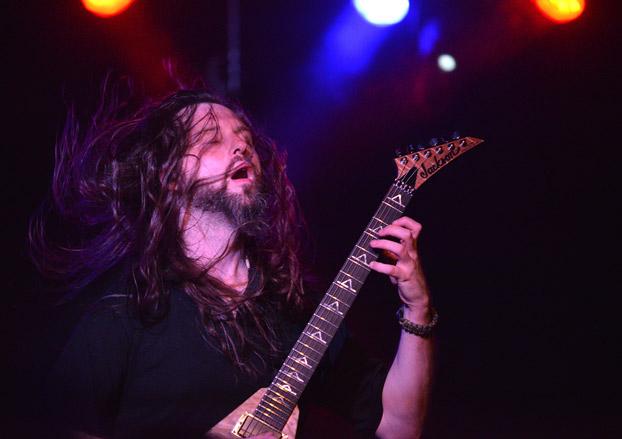Horizontal and Vertical Natural-Minor Runs
Examine horizontal and vertical natural-minor runs in this lesson.

In my previous two columns, I introduced a handful of very specific methods to study licks based on pentatonic scales.
We examined the standard “Western” minor pentatonic scale, spelled 1[root] b3 4 5 b7, as well as the Japanese Hirajoshi scale, or “Eastern” pentatonic, which is spelled 1[root] 2 b3 5 b6.
This month, we’ll incorporate a modal approach, utilizing our E minor pentatonic scale with the inclusion of the major second, F# and the minor, or “flatted,” sixth, C, resulting in the E natural minor scale, also known as the E Aeolian mode: E F# G A B C D (spelled 1[root] 2 3 4 5 b6 b7).
This scale works well over chords like Em and its offshoots Em7, Em9, Emb6, Em-sus4 and Em7b13. As we had done previously, each group of notes, or “cell,” is going to be a repeating four-note shape that moves up and down the fretboard while remaining diatonic to (within the scale structure of) E natural minor.
If we begin with the four-note cell presented in FIGURE 1 (E F#E D), we can change its shape slightly by starting on each subsequent scale degree of E natural minor. As shown in FIGURE 2, I begin by playing E-F#-E-D twice, and then I move up the fretboard so that I can begin the cell on the next higher scale degree, F#, resulting in the cell F#-G-F#-E. Likewise, the following cell is G-A-G-F#, followed by A-B-A-G and finally B-C-B-A.
I then descend through the previous four shapes and additionally descend to cells that begin on the notes D, C and B before ascending back to our starting point. Each cell is articulated with a picked note followed by a hammer/pull on the same string and ending with a picked note on the next lower string. I like to keep my fret-hand fingers positioned directly above the board in order to facilitate some of the wide stretches required to reach a few of these shapes.
FIGURE 3 is quite a bit more challenging in that the tempo is doubled and each cell is played only once. I use a downstroke for the initial pick attack and an upstroke for the note sounded on the B string. Work through this drill slowly, increasing the tempo gradually. This technique can be applied to a “vertical” approach—moving across the strings—as demonstrated in FIGURES 4 and 5. After playing the sequence descending, as shown, reverse the process by playing it in an ascending manner.
All the latest guitar news, interviews, lessons, reviews, deals and more, direct to your inbox!
In FIGURES 6 and 7, I begin each pattern on a note of an E minor triad (E G B), and in FIGURE 8 I employ a “diagonal” approach with hammers/pulls, placing some of the four-note cells on one string. Switching between this kind of legato articulation and straight alternate picking is good for expanding dynamic versatility.

